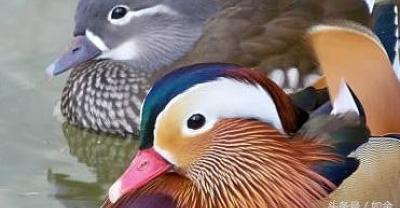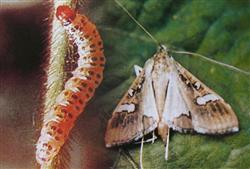larval Learn more about larval
-
Problems in the black larval stage of Japanese eel and its countermeasures

At the turn of spring and summer, Japanese eel culture is mostly in the black larval stage, which generally reflects the decline of feeding rate, prone to rotten Gill, rotten tail syndrome and other phenomena, which seriously affect the healthy, sustained and steady development of Japanese eel culture. This paper analyzes the main problems existing in the culture stage of Japanese eel black larvae, and puts forward some countermeasures for reference. First, the feeding rate decreased: the feeding rate decreased or the feeding amount was difficult to increase in the culture of Japanese eel black larvae, and the main inducing factors
2019-01-16 -
Technical measures to prevent secondary cocoons of silkworm, Bombyx mori

Raising silkworms and choosing high-yield and high-quality cocoons is the key to high yield and harvest. In the process of sericulture, many factors will produce many cocoons and reduce the benefit of sericulture. In order to avoid the occurrence of secondary cocoons, increase the cocoon rate and reduce the secondary cocoon rate are important links to further increase the economic benefits of sericulture households. The related technical points of preventing secondary cocoons are briefly introduced as follows: 1 strengthening the feeding and management of 1.1 small silkworms are covered with plastic film, which can not only keep the mulberry leaves fresh, but also promote the larvae to like to eat, which is beneficial to the larvae to eat and lift.
2019-01-16 -
Control methods of yellow diamondback moth in Magnolia

The main results are as follows: (1) combined with field operations such as pruning in summer (first generation area) and winter and spring (1st generation area), insect cocoons are cut or broken off. (2) cut off the leaves and kill the larvae when the young larvae are damaged by clusters. (3) spraying 20% dimethrin suspension 20% chlorpromazine 3 suspension or spraying Bt emulsion cyanobacteria in the whole larval stage. (4) when necessary, spray insecticides such as fenitrothion in the larval stage.
2019-01-15 -
The law of cocooning in silkworm spinning

The life of silkworm goes through four stages: egg, larva, pupa and adult. The larval stage of silkworm is called the stage of silkworm baby. Sericulture usually refers to the rearing of larvae. The larvae go through four molting times from hatching to cocooning. As a result, the process of the larva is divided into five instar stages. For a period of time before molting, silkworms do not eat or move, which is called sleeping. From the first to the fourth instar, the silkworm sleeps four times, and the fifth instar silkworm no longer sleeps in the later stage, but forms a cocoon and pupates in the cocoon, thus completing the larval stage of the silkworm. The newly hatched silkworm is called ant silkworm, which has just molted its skin.
2019-01-15 -
Key points of Disease Control techniques for Silkworm, Bombyx mori

In the process of rearing silkworms, the occurrence of silkworm disease is closely related to the physique of larvae, pathogens and environmental conditions. Sericulture farmers do not disinfect silkworm rooms and silkworm utensils thoroughly, extensive management techniques and poor environmental conditions during rearing, which are not conducive to the growth and development of larvae, which can easily lead to the invasion of pathogenic microorganisms and cause diseases due to the decline of larval physique, resulting in a large number of diseases of larvae and causing great economic losses to sericulture farmers. In order to effectively control the occurrence of larval diseases, during the period of rearing silkworm larvae,
2019-01-16 -
Industrial breeding techniques of Penaeus vannamei

Penaeus vannamei has parent shrimp culture, gonadal maturation, induction of mating and spawning, and fry techniques such as collection and hatching of fertilized eggs, larval cultivation conditions and fry management need to be familiar with. In order to make the shrimp grow fast, the water quality, the release density, and the depth of the pond water
2020-11-08 South whitening prawn factory seedling technology abstract south -
Control of luminous bacteria disease of South American white shrimp seedlings

Control of luminous bacteria disease of South American white shrimp seedlings
2018-07-23 -
What's the name of the dragonfly larva?

What's the name of the dragonfly larva?
2018-06-29 -
The breed knowledge of silkworm

The varieties of silkworms can be divided into three categories: 1. Due to different varieties, only one generation of diapause eggs occurs in a year. This variety develops slowly, after many days, the larva eats a large amount of mulberry, the silkworm body and cocoon shape are also large, and the silk is the most, but its physique is weak and can not adapt to the climatic conditions of high temperature and humidity, so it is suitable for breeding in temperate zones. 2. The second generation of diapause silkworm varieties occurs within one year, that is, the first generation produces non-diapause eggs and the second generation produces diapause eggs. This kind of product
2019-01-16 -
Prevention and treatment of stomach rot in sea cucumber culture

The disease mostly occurs in the late stage of big ear larvae, and it is more likely to occur during the high temperature period from June to July every year and when the larval culture density is high. The disease has been found in Shandong and Liaoning provinces, and the incidence is increasing year by year. The main symptoms of death are as follows: increase of gastric wall in larvae.
2020-11-08 Sea cucumbers aquaculture stomach rot disease prevention and treatment this disease many in big ears -
Breeding techniques of cultured sea cucumbers

Collection and storage of parent ginseng, artificial spawning, fertilized egg hatching and larval breeding management (control of reasonable cultivation density, water exchange and water quality management, suitable bait and feeding, manufacture and release of attachments) juvenile ginseng cultivation. Bait
2020-11-08 Culture sea cucumber breeding technology technological process parent ginseng -
How to prevent and control diseases in artificial breeding of scallop

During the period of artificial breeding, scallop larvae are easily infected with bacteria and fungi, resulting in mass death. Vibrio anguillarum is a common bacterial disease. Vibrio anguillarum specializes in decomposing organisms and decomposes the facet of larvae in a very short period of time, especially after egg collection.
2020-11-08 Scallop artificial breeding how prevention and control disease -
It is necessary to control rice leaf rollers in time.

Rice leaf curler is one of the main rice pests in our province. It harms rice leaves with larvae, which can make rice leaves withered and white, especially at booting stage or heading stage, which will greatly reduce rice yield. The insect occurs for seven generations a year, and the number of larvae of the second generation in early rice is the most serious. If the control is not timely, it will occur greatly during heading, resulting in inestimable losses. The prediction of rice longitudinal leaf curl should be based on the prediction of occurrence period to determine the suitable period for control. According to the previous situation, it should be at the peak of the moth.
2019-01-16 -
Selection of artificial breeding King transfer worms in Bee Culture Technology

In addition to the close relationship between queen bee weight and egg weight and queen bee quality, all factors in the process of artificial rearing have a great influence on queen bee quality.
2019-02-27 -
How to raise Mylabris?

How to raise Mylabris?
2018-12-16 -
How do field snails reproduce?

Field snails reproduce through eggs. The field snail is dioecious and hermaphroditic. It is an oviparous animal with a unique way of reproduction. The mature eggs meet and fertilize with sperm at the top of the fallopian tube, and the fertilized eggs undergo embryonic development in the womb of the female snail. Embryonic development of Oncomelania hupensis
2020-11-11 Field snail how reproduction field snail pass egg offspring. -
Is longicorn beetle a beneficial pest or pest? Is the bite poisonous?

Longicorn beetle is a kind of insect we used to catch and play with when we were young, with long tentacles and black skin with a day shift. There are many kinds of longicorn beetles, which are widely distributed in China. Most of the longicorn beetles are large or medium-sized and like to move on trees. The longicorn beetle.
2020-11-11 Longicorn beetles yes beneficial insects pests bites poisonous beetles -
Planting techniques of sugar orange: how to control Spodoptera litura?

How to control Spodoptera litura with sugar tangerine? What is the damage rule of sand sugar orange withered leaf moth? The adults of Spodoptera litura can be found in the field from March to November, but more in autumn. Eggs occurred more frequently in the wild in early June, August and early September, but the larvae died because of their low hatching rate.
2018-07-18 -
Morphological characteristics, occurrence regularity and key control techniques of mountain plum longicorn beetles

Morphological characteristics, occurrence regularity and key control techniques of longicorn beetles 1 morphological characteristics 1.1 Adult body is long cylindrical, the front end of the body expands into a circle, like a head, the head is flexible, the back is slightly flat, and has a pair of long antennae.
2018-06-07 -
Control of tea caterpillar

Tea caterpillar is also known as tea yellow moth and swinging head worm. It belongs to the family Lepidoptera. It is distributed in all the tea-producing provinces in China, and it is an important pest in tea areas in China. Mainly harm tea, but also harm Camellia oleifera, oranges and so on. The young larvae bite on the old leaves of tea trees to form a semi-permeable film, and then bite on the tender shoots to form leaves. Larvae cluster damage, often tens to hundreds of heads gather on the back of the leaves to feed. When it is serious, the leaves of tea trees are completely eaten up. The morphological characteristics of the adult are about 10 mm in length and 28 mm in wingspan. The female moth is slightly larger with yellowish-brown wings, while the male moth is slightly smaller and yellowish brown. Front
2019-01-15
